A dryer hose resembles your portable AC exhaust hose, except it is longer and a bit smaller. You might be wondering if this may be a good alternative for the inconvenience of using the shorter exhaust hose. If you’re looking for advice about using a dryer vent, we did our research, and here’s what we can share.
Though venting your portable air conditioner through a dryer vent may seem to work, it will eventually result in decreased efficiency, giving you more problems than you need. There’s a reason why exhaust hoses are big in diameter and short in length. Those measurements are just what your unit needs to function at its best.
Vaguely stating that using dryer vents will lead to inefficiency might leave you hanging. Just what can these little differences in specifications do to your portable AC? Keep reading as we will elaborate on a few details behind these specifications.

Why It’s Not Good To Use Dryer Hose For Portable Air Conditioner
In most circumstances, it's not advisable to exhaust a portable air conditioner through a dryer vent. The average exhaust hose has a diameter of 5 inches, while an average dryer hose is 4 inches. Such a small difference affects the system significantly. Why this specification shouldn’t be neglected is explained as follows.
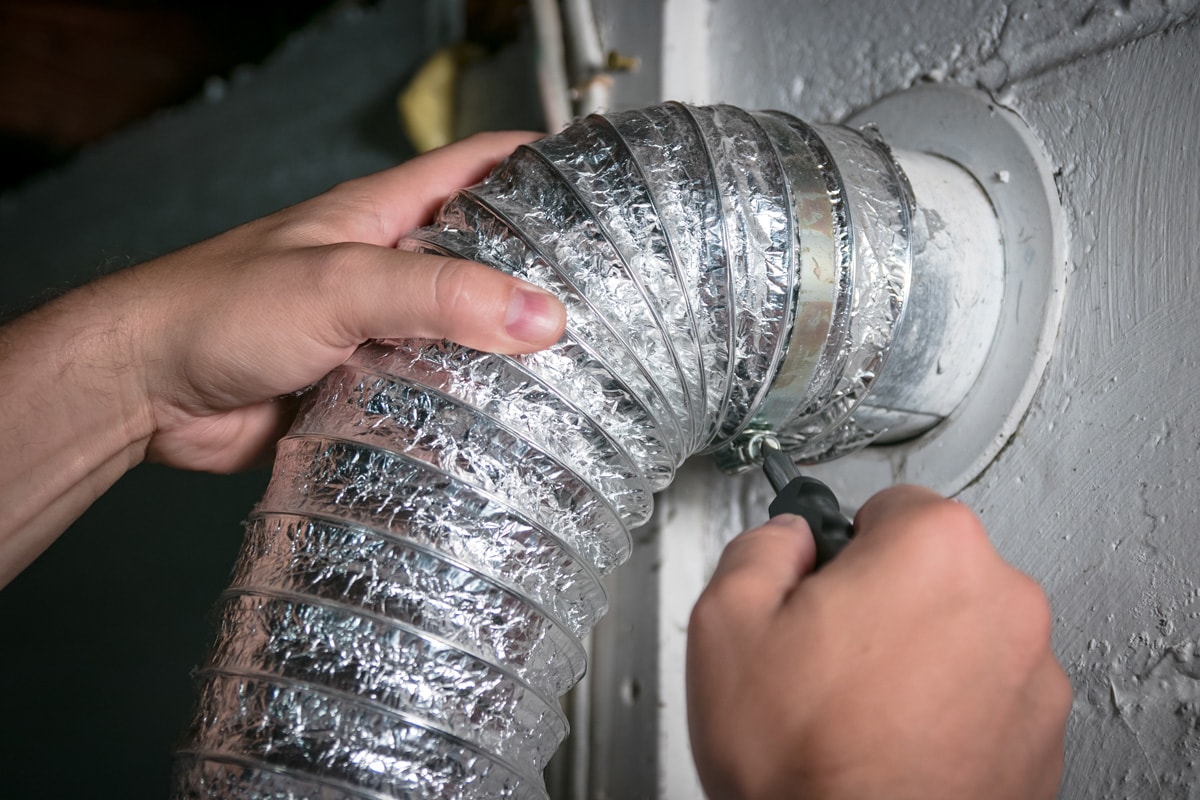
Diameter
Air velocity is a big factor when it comes to how effectively and quietly ducts move the proper amount of air from one location to another. In order to get the proper throw of the exhaust hose, you must choose the register with the appropriate air flow. Some turbulence would result from velocity variations in the reducer fitting. A bit more slowly, you will get an increase in corner activity and flattens a little at the reduction.
To sum this up, as air goes from a larger to a smaller duct, its pressure increases. The velocity reduces as it passes from a smaller to a larger duct, in which case, using the larger exhaust hose instead of a smaller dryer vent. The diameter is just one difference to consider. Another important factor to note is length.
Length
The exhaust hose that comes with your portable AC can be stretched out to its maximum length (about 48 inches), but to preserve its optimal performance, it should be adjusted to the shortest length possible while bearing in mind to minimize any bends in the hose.
In a few models of portable air conditioners, the exhaust hoses can be extended, but in most cases, they cannot. A backlog of hot air in the exhaust line caused by extending the hose could release through the front of the unit, mixing with the cold air it is producing and causing it to produce warm air.
Your portable AC exhaust hose has been lengthened specifically to fit with the blower of the device. The blower pushes the hot air that is released from your appliance through the exhaust hose. By preventing the air from properly exhausting, increasing the length of the hose overloads the blower. This lowers the unit's cooling capacity, shortens the blower's lifespan, and may even result in a malfunction.
Also, keep in mind that trying to extend the exhaust hose on your portable air conditioner usually voids the warranty on the device. If you see that the exhaust line is just barely long enough to reach the window bracket from the unit, you can place the portable AC on a stable platform to extend the hose's length without sacrificing the unit's performance.
Flexibility
Dryer vents are more flexible than portable AC exhaust hoses. This means a dryer hose is more sensitive to bending than an exhaust hose. It may lead to back pressure stressing the compressor and gradual buildup of heat in the exhaust line. It is not recommended for the exhaust hose to bend, exceeding a 45-degree angle. In case you can't avoid bending the exhaust hose, ensure that you bend it smoothly and gradually.
What size hose do you need for a portable air conditioner?
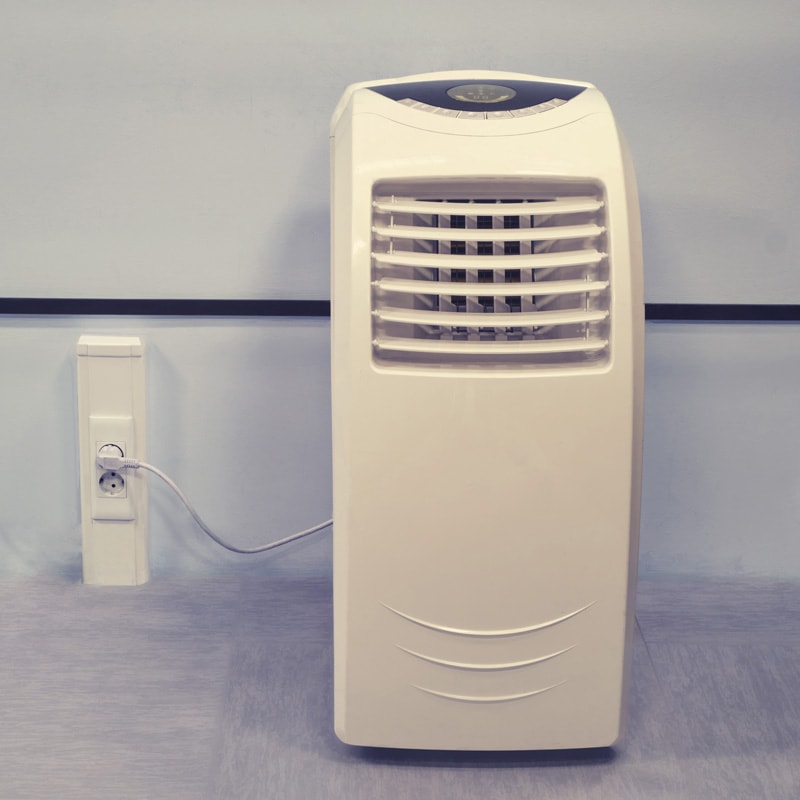
A portable air conditioner's exhaust hose is typically 5 feet long with a diameter of 5 inches. It’s usually, but not always, composed of sturdy, flexible plastic. We have previously published a full article about how long the exhaust hose is on a portable AC. It will help to check it out.
Can you extend the exhaust hose for your portable air conditioner?
When venting a portable air conditioner, you shouldn't attempt to stretch the vent line because doing so will reduce efficiency and might even violate the warranty.
The normal hose length for portable air conditioners is 5 to 7 feet. You may simply find longer hoses at your neighborhood hardware shop if you need them. If the hose diameter is 5 inches or greater and the exterior venting flap is removed, you can also vent through a short dryer hose.
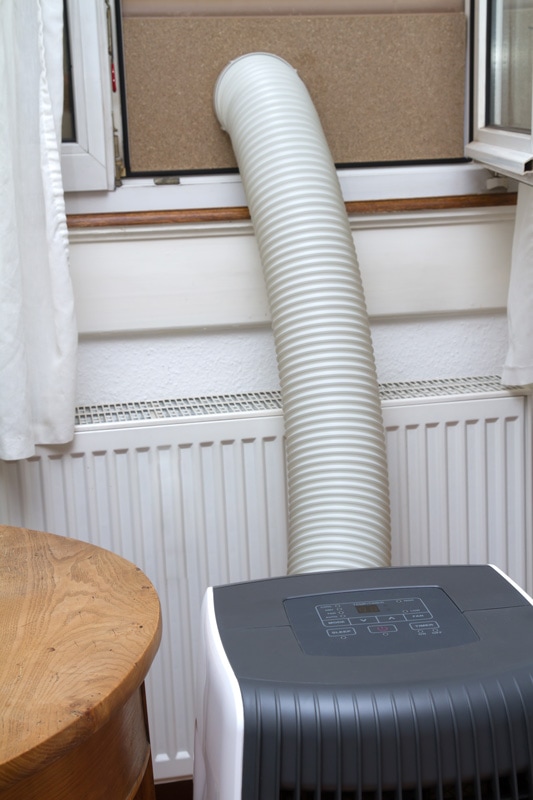
If you really need a bit of an extension, we recommend you use an 80-inch-long portable AC exhaust hose.
Click here to see this 80-inch exhaust hose on Amazon.
What happens if you don't use the exhaust hose on a portable air conditioner?
With one significant exception, a portable air conditioner in cooling mode is very similar to a purpose-built dehumidifier. Portable air conditioners drip collected water onto the hot condenser coil, improving heat removal efficiency and eliminating the need to empty a tank every hour. It's a win-win situation if you push that air and humidity outside.
However, if you remove the vent hose, the air conditioner will just alternate between cool and dry and hot and humid in your room. This would really heat up your room much more than it would chill it down because most devices use roughly 1,000 watts of power.
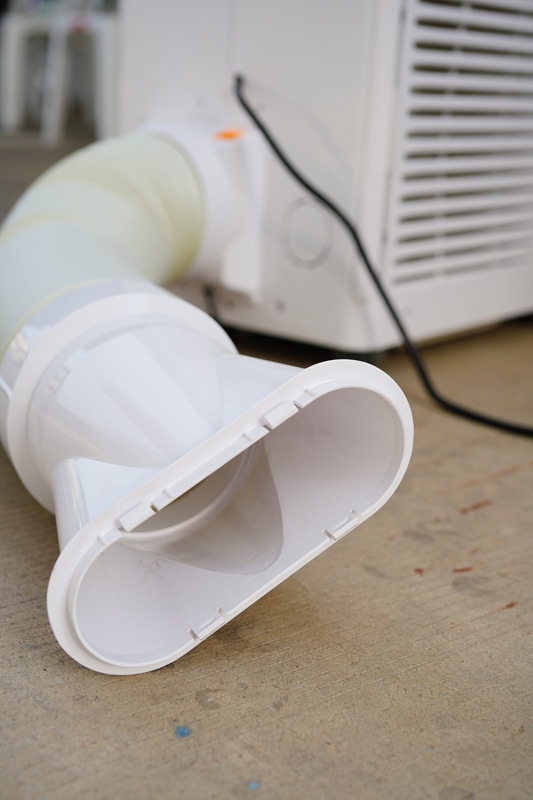
The quantity of heat produced by a portable air conditioner is unchanged when it is switched to "dehumidifier" mode, but the water drains directly into a catch tank (or, better yet, out of a drain hose) as opposed to returning to the air. In this instance, the main distinction between a portable AC unit and a dehumidifier is that the former often has extremely small water tanks and is challenging to drain unless you can move it outside and dump the water onto your lawn.
Running a dehumidifier may improve the comfort of a room if the humidity is too high, but the heat isn't a major issue. Even so, it's still beneficial to have the exhaust hose connected unless it's so chilly outdoors that you prefer the 1,000 watts of heating to cooling.
How do you vent a portable air conditioner without a hose?

The exhaust pipe is a crucial component of portable air conditioners, not just one of its features. Every air conditioner works on the fundamental tenet of cooling a space. To achieve cooling, we must remove heat from that area (usually outdoors). The exhaust hose for portable air conditioners not only allows but completely facilitates this passage of heat.
Keeping in mind the 2nd Law of Thermodynamics, you can't really transfer heat between two locations without a hose. One insulated area would be used to operate a hoseless portable air conditioner. We can't actually cool anything without the hose, which allows heat to be transferred from one area to another. Without a hose, using a portable AC will actually result in higher inside temperatures.
There is a special case, though, in using a portable AC unit without an exhaust hose to provide cooling—using AC without vents. These are AC-type devices that don't require venting to deliver cooling (based on evaporation rather than a refrigerant cycle like ACs). They are commonly referred to as "ventless air conditioners" or evaporative coolers.
In Closing
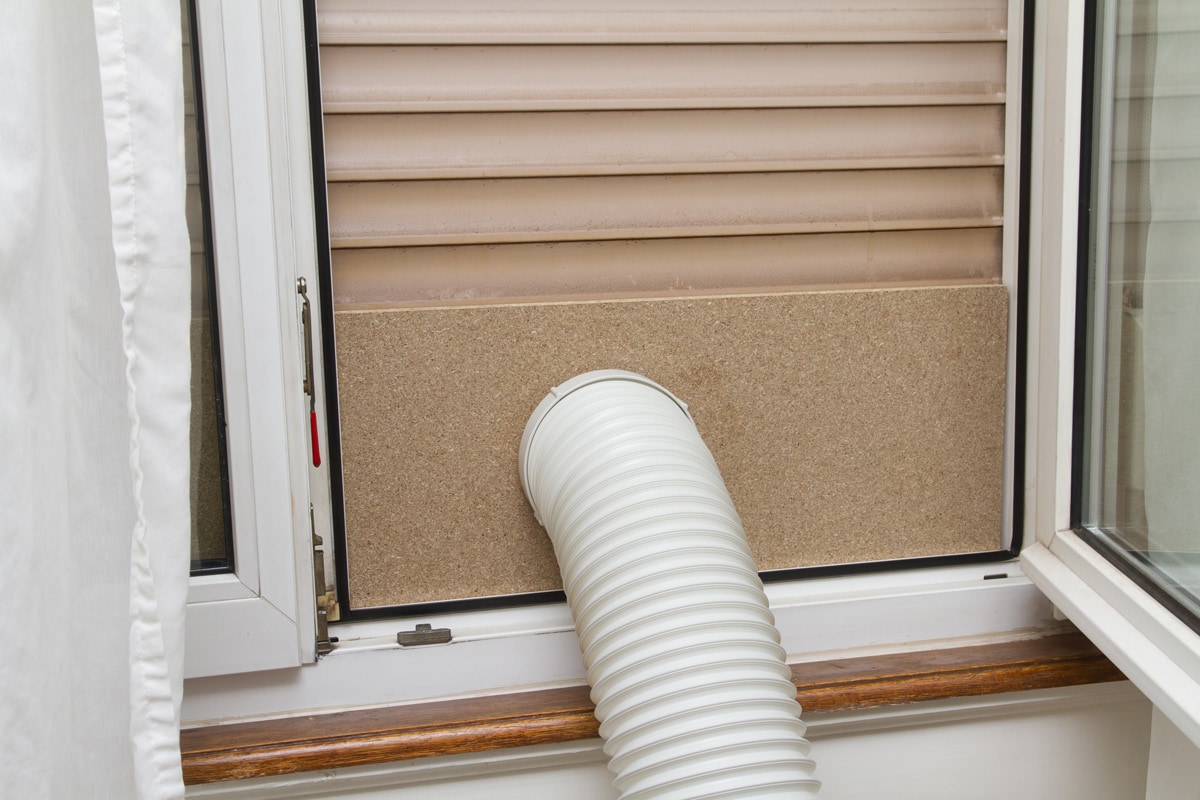
Venting your portable AC using a dryer vent hose is technically possible but not helpful in the long run. Doing so will cause a backlog of hot air, overheating, malfunction, and ineffective cooling. It is best to stick with the exhaust hose of the portable AC you have purchased. There are other ways to deal with a short venting hose, but if you need to extend it, you can buy a slightly longer AC portable exhaust hose.
If you liked this post, you might also want to check out the following:

